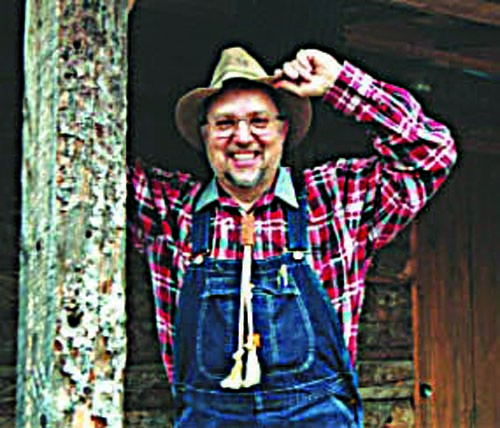Part 3
In early 2004, not long after a Shawnee County District
Court judge had lashed the Kansas Legislature for under-
funding local schools, urban lawmakers began to put a sharper
eye on rural schools.
The judge, Terry Bullock, had twice prompted dramatic
changes in school finance – the first time in October 1991,
when he suggested strongly that the state’s local schools were
unconstitutionally under-funded and invited Gov. Joan Finney
and the legislature to enact change. The result was historic
reform in 1992.
A decade later, trouble again. In December 2003, Bullock
issued a 104-page “preliminary interim order” scolding the
Legislature for treating state school finance as a “political auc-
tion” (page 53) and reproaching the State Board of Education
(page 79) for failing to manage the school system. He sug-
gested that for ten years, the state had been so lax in funding
that it might take as much as $1 billion to make the system
whole as proscribed in the original reform law.
Central in this controversy were two items: property taxes,
and the cost of rural schools.
For years, since the state’s first step toward providing
significant, long-term aid to local schools, it was clear that
property taxes could not pay the entire cost. Income and sales
tax revenues would be added to the sources for state aid, with
allotments determined by the wealth (or lack of it) of each
school district. This would mean that income and sales taxes
collected in cities and suburbs would help fund aid to small
schools in sparsely settled communities. Under the reform
law, this was called “low-enrollment aid.”
Among the early and persistent critics of low-enrollment
aid was the venerable former Senate Minority Leader, Jack
Steineger, of Kansas City. Steineger’s district included urban
neighborhoods with crowded and under-funded schools. Aid
for tiny country schools and their few students, scattered
about the vast open plains, was a waste of precious resources,
he said. Urban and suburban legislators, Democrat and
Republican, began to join Steineger’s chorus in the late 1980s
and early ‘90s.
LEGISLATORS’ REACTION to Bullock’s order in 2003 was
mostly a shrug.
A billion-dollar fi x, many said, would require an unrealistic
and (in 2004, an election year) an unthinkable measure of tax
increases and revenue shifts. Besides, a joint legislative com-
mittee had been appointed to recommend by December 2005
changes in the school fi nance law. Why hurry now?
The urgency, if not hurry, got a nudge when Gov. Kathleen
Sebelius hinted strongly at the time that consolidation of small
school districts was an option for lawmakers who were looking
for revenue. The focus in this “hint” was a big number – more
than $300 million at the time – the special, additional allocation
of state aid based on district enrollments. Of this, about $226
million was “low-enrollment” aid for districts with head counts
at 1,725 students or less; $76 million was sent to districts with
enrollments of more than 1,725. Put another way, 75 percent of
the money went to districts with a third of the state’s students.
The numbers today are larger but message hasn’t changed.
Of the state’s 286 school districts, more than 200 have enroll-
ments of 1,000 or less.
(Nearly three years after Bullock’s order, the Legislature,
in May 2006, approved a three-year, $541 million package of
state aid increases for local funding – about half the amount
that Shawnee County District Judge Terry Bullock had esti-
mated as necessary to resolve disparities between the state’s
rich and poor school districts.)
LOW-ENROLLMENT aid was written into the school fi nance
reforms of 1992 to secure the support of rural legislators for
passage of the new law. (Among those lawmakers were House
Speaker Marvin Barkis of Louisburg and Appropriations Chair-
man George Teagarden of LaCygne, both Democrats; Senate
Education Chairman Joe Harder, R-Moundridge, and House
*
*
Education Chairman Rick Bowden, D-Goddard.)
The belief was that without this aid, scores of sparsely popu-
lated districts would be forced to close or merge, with devastat-
ing economic and social impact on their communities.
In the years since, Bullock noted, this system of enrollment-
based aid had become fundamental in the “political auction”
for deals needed to pass school funding bills.
“… the current fi nancing scheme was never based upon costs
or even estimated costs to educate children,” Bullock said in
his order, “ but was in fact the result of a ‘political auction’
(where various funding levels were proposed until, fi nally, a
political majority could be achieved in the Legislature.)”
By 1996, urban lawmakers had demanded – and won – sub-
sidies for “high enrollment” districts above the line for low-
enrollment subsidies. This was called “correlation” aid, and (as
noted) was worth $76 million a year for 53 districts. This was
necessary for any school fi nance legislation, since more than
half the House and Senate were now elected by voters in only
six urban counties, fi ve of them in the northeast.
TWO FACTORS have slowed the urban passion for more school
district consolidation. First, it has happened anyway. The con-
tinued withering of rural economies and populations (and tax
bases) coerced consolidation of 18 school districts in central
and western Kansas from 2002 through 2011. This happened
with no nudging from legislators.
Second, the power of the Legislature’s urban and suburban
districts has grown sharply in the past dozen years. Six of the
state’s 105 counties – Johnson, Shawnee, Wyandotte, Douglas,
Leavenworth and Sedgwick –now elect more than 60 percent
of the Kansas Senate and House of Representatives.
PROPERTY TAXES and state school finance are solidly con-
nected, critical in the balance of funding in the operating bud-
get for state government.
Three years ago, for one example, the Kansas Chamber
of Commerce lobbied successfully in Topeka for expanding
property tax exemptions for big business. The Chamber, work-
ing for the big oil and cement industries in southeast Kansas,
insisted on broader machinery and equipment property tax
exemptions for large commercial properties. The first exemp-
tions were granted in 2006, and have cost local government
millions in tax revenues and local taxpayers millions in rate
increases.
All of this happened at a time of increasing farmland values,
although farm taxes have remained relatively unchanged. This
is because a constitutional amendment, approved by Kansas
voters in 1986, protects farmland assessments through use-
value property appraisal; taxes are determined by the income
derived from the land, not by its market value. The amendment
was to prevent owners from being forced to sell land simply
to pay their taxes.
But the governor and urban legislators, searching for ways
to resolve historic budget deficits caused by dramatic tax cuts,
and new ways to pay for local schools, now consider farmland
a kind of low-hanging fruit.
Easy pickings, for a couple of reasons. First, farmland is
relatively low-taxed, given its value in proportion to current
tax rates, and the tax breaks and government subsidies secured
over the years by the farm lobby. Second, rural Kansas no lon-
ger has the legislative power to prevent raids on their assets.
Urban and suburban legislators, with the governor’s bless-
ing, have the votes and the muscle to pass an amendment that
repeals the Constitution’s use-value protection for farmland.
Constituents and school patrons in five or six counties alone
comprise the majority needed to approve it at the polls.
Urbanites may see farmland as a new source of revenue for
their schools and tax relief for their CEOs, their office parks,
subdivisions, and their schools.
The issue tells us that Kansas may be headed for a two-tier
economy – the haves, and the have-mores. The rest of us will
get the invoice.
*
*
– JOHN MARSHALL



